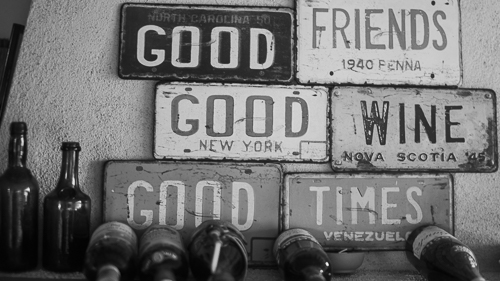Having left the Aurelia highway, we passed the hill covered by Mediterranean maquis and the sculptures of the Park of the tarot cards by the artist Niki de Saint Phalle.
It was quite difficult to arrive at our destination, but by asking several locals and having passed lots of bends and narrow roads, my guide found the organic farm called Borgo Ciro where the owner Sebastiano Bianca met us.
I felt like I had arrived far, far away from any village being surrounded with fresh air Mediterranean maquis and a few scattered houses. Actually, we were just 8 kilometres from the Tyrrhenian sea.
In fact, Sebastiano told us that this area is extraordinarily healthy and as described on the web site: “The analyses of the soil confirm the suitability for cultivating grapevines; a land surrounded by Mediterranean maquis lets the grapes absorb its various fragrances”.
Sebastiano is a pensioner and now he can dedicate himself to his true passion: cultivation of a vineyard and making wine. His passion starte 35-40 years ago, having bought and read a huge pile of books on wine-making and studied at the University of Bordeaux. However, even if theory is very important, practice is totally different, he says.
Finding this place took 6 years, looking for a suitable farm in many places. Sebastiano and his wife decided to buy this place in 2002, but it took 2 more years from purchase till they moved in. Two more years were required for restoring the house and 2 more years before starting production of wine and olive oil. In fact, the production started in May 2006.
The vineyard occupies an area of 1 hectare and 3 types of red wines are made: Sangiovese, a blend consisting of 50% Sangiovese, 30% Petit Verdot and 20% Barbera and a rosé wine from a combination of Sangiovese and Barbera. All of them are high quality wines and all of them are DOC.
In order to obtain the highest quality, an agronomist and an oenologist work at the farm.
The cultivation is organic , but in order to protect the plants against insects, they use elements like sulphur and copper. 5 kg of copper and 5 litres of water is required for one hectare of land.
In order to fight the the olive fruit fly, they put kaolinite, a type of white clay used to make porcelain, on the leaves of the olive trees. This turns the green leaves white such that the olive fruit flies don’t recognise them. In case of rain, the kaolinite is washed away. Then, they have to wait till the leaves are dry and repeat the same procedure.
During our visit, two workers were collecting Burgundian grapes called Petit Verdot, a grape which matures very slowly.
If one ascends the summit of a hill, which isn’t covered by Mediterranean maquis, looming above the farm, one can see the olive groves of the farm consisting of about 800 olive trees of 5 varieties. The oldest ones were planted 70 years ago, some were planted in the early 1950s and some were planted in 1988. About one tenth of the are originally from Maremma.
This farm has an agreement with on olive oil press where olives from the this farm should be turned into olive oil within 12 hours after having been collected. In addition, the cases containing the freshly picked olives are never more than half full so that they don’t crush each other. These two precautions contribute to decreasing any fermentation of the olives, which have a negative impact on the flavour of the olive oil.
Harvesting of both grapes and olives is done manually at this farm. The finished products are mainly sold to local restaurants, but it’s also possible to buy directly from the farm.
Twice a year, there is a buffet together with tasting of the farm’s products.
Sebastiano also invited us to see his wine cellar where the grapes are turned into wine. There, after having de-stemmed the grapes, they are crushed in a wine press, making a combination of juice and grape skins. Next, both solid and liquid parts are pumped into stainless steel containers where they are allowed to rest for some time. Then, the colour pigments and the tannins present in the skin of the grape, are passed to the must.
Some days later, the must and pomace, that is the solid parts of the grapes, are let out at the base of the tank and pumped through a hole at the top of the tank. In this way, the must is forced to pass the pomace, giving it more flavour and colour, while at the same, it is oxygenated. Applying oxygen to the must, aids fermentation of the must such that sugars are converted to alcohol.
When the the fermentation starts slowing, the level of sugars in the wine is measured daily. When the level is near 0%, the wine is allowed to rest for 3 days. Then, another, more sensitive measuring instrument is used to determine if all the sugars have been consumed. Next, a procedure called racking is done where the wine is separated from the pomace by means of gravity.
The wines at this farm allowed to mature for 6 months in stainless steel tanks, next they are transferred to oak barrels by means of decantation. Naturally, flavours from the oak will be transferred to the wine. After having spent one year in a barrel, the wine is bottled.
The Bianca family has installed solar cells at the farm such that they can generate their own electrical energy.
It is highly recommended for everyone who wants to go to a nice and clean place to go to a wine tasting at Borgo Ciro, enjoying the beauty and the tranquillity of the scenery at the same time.

